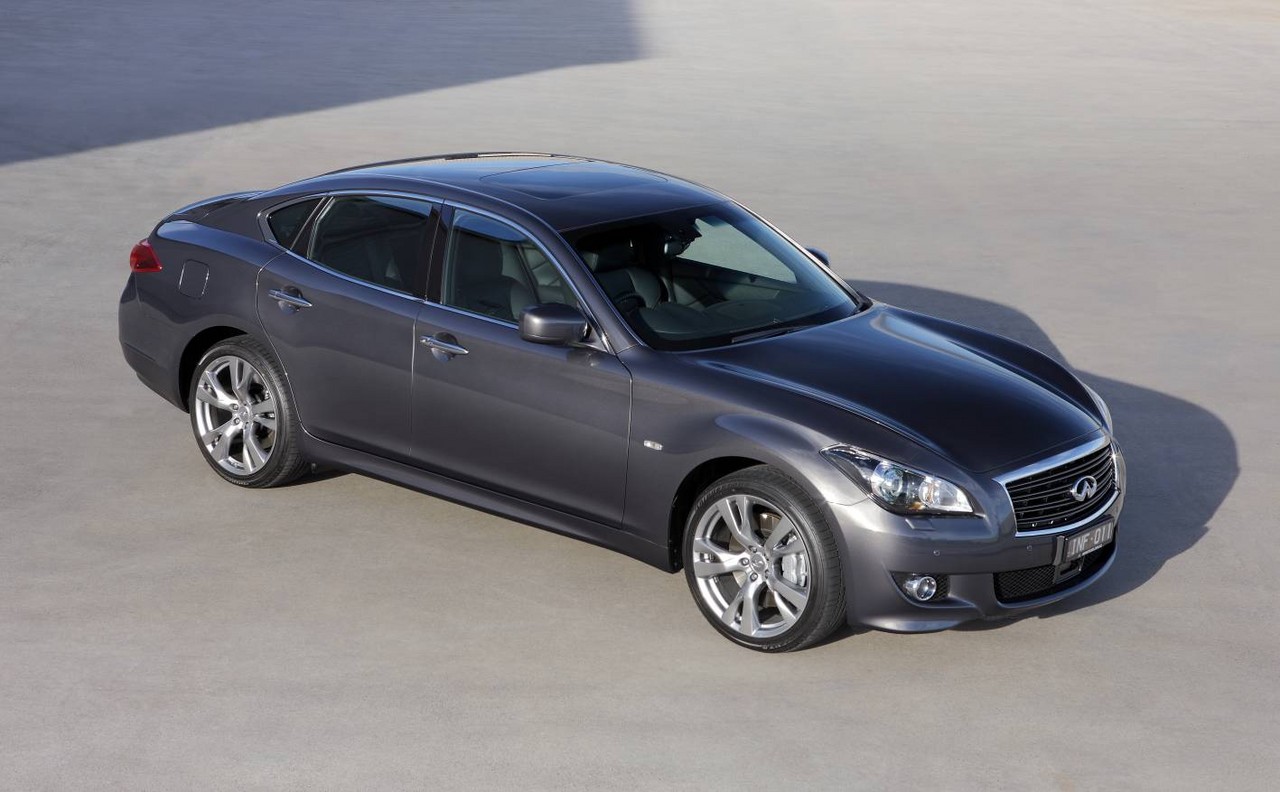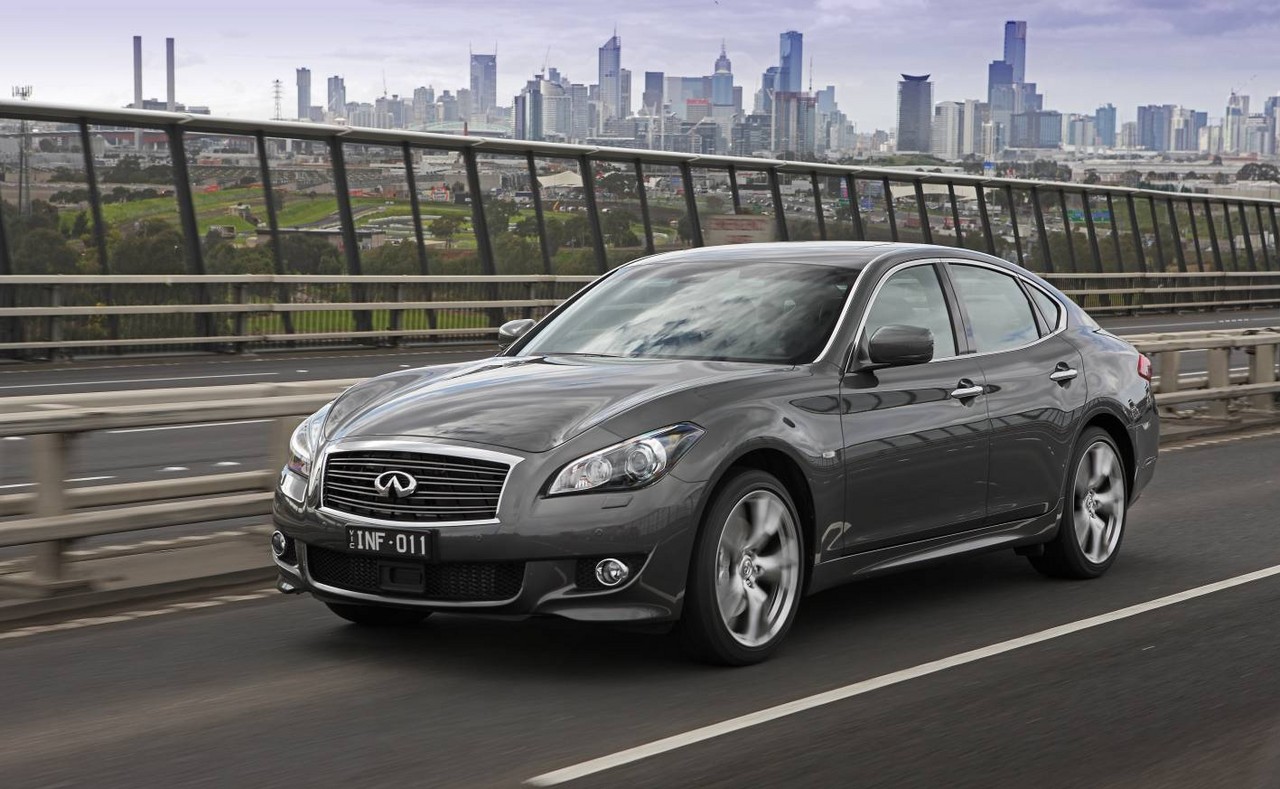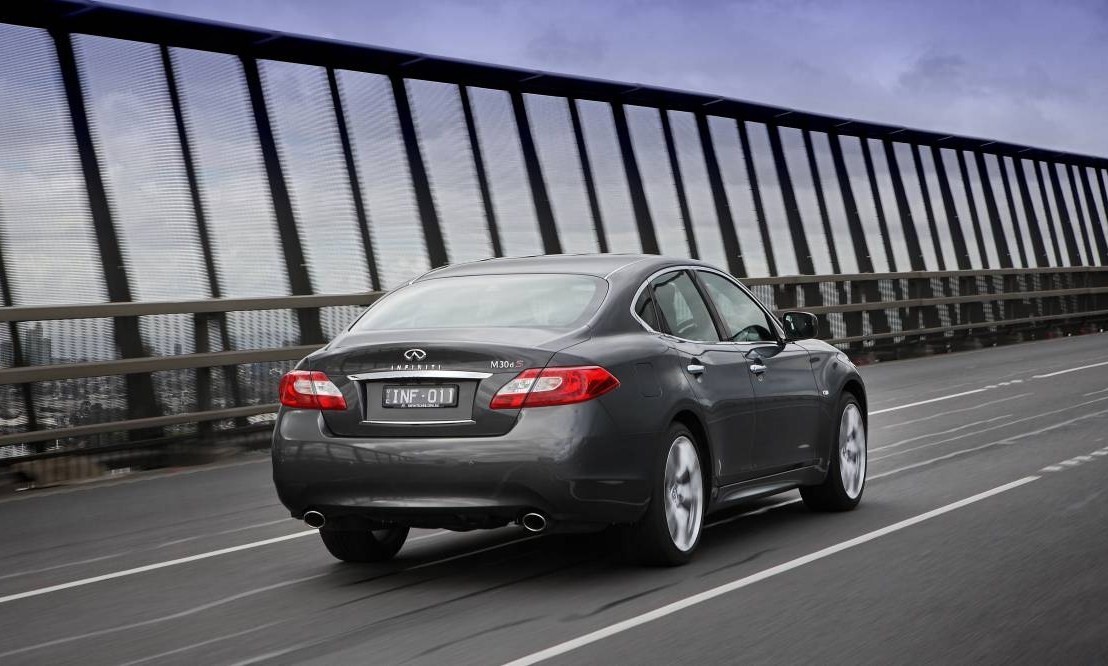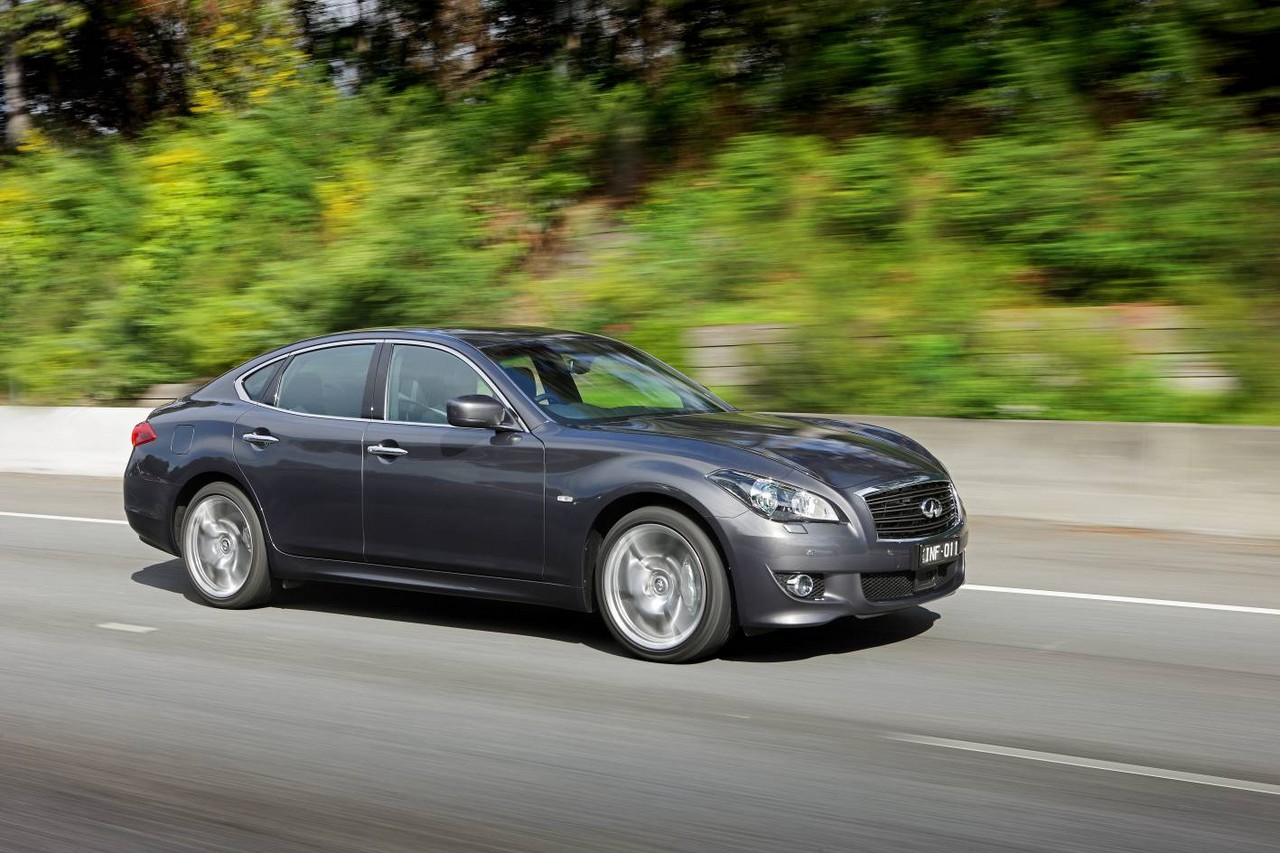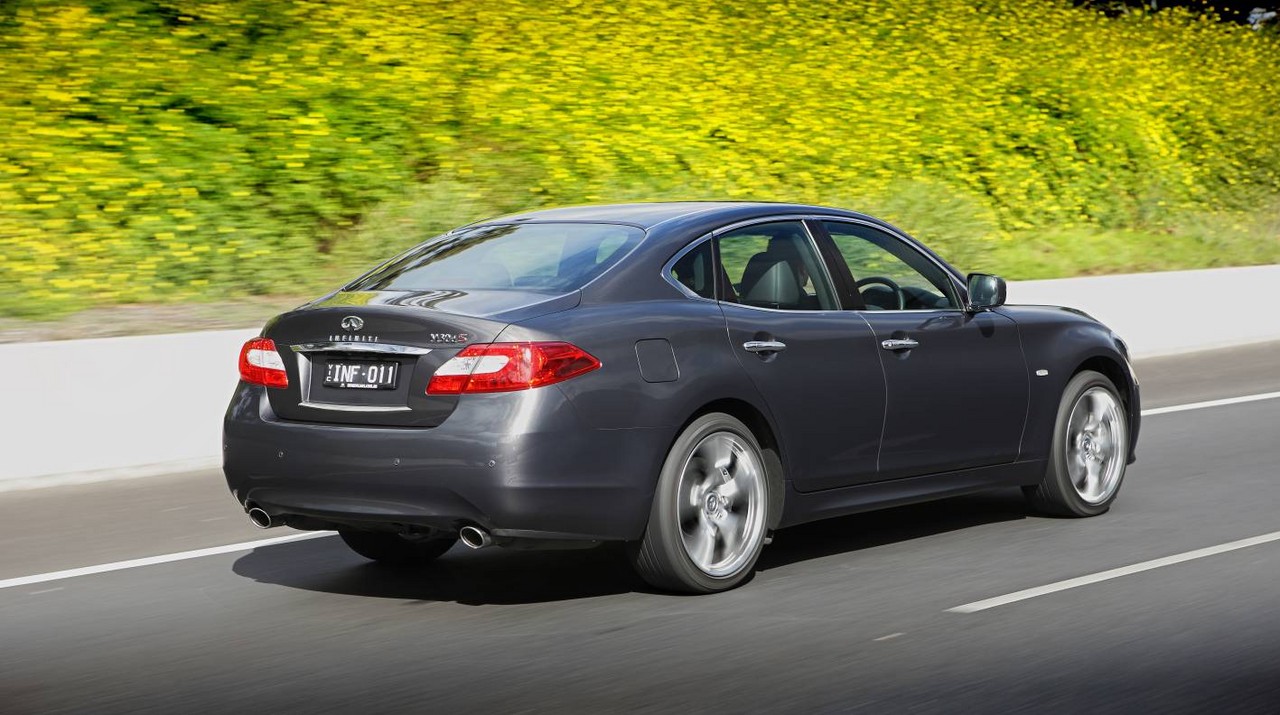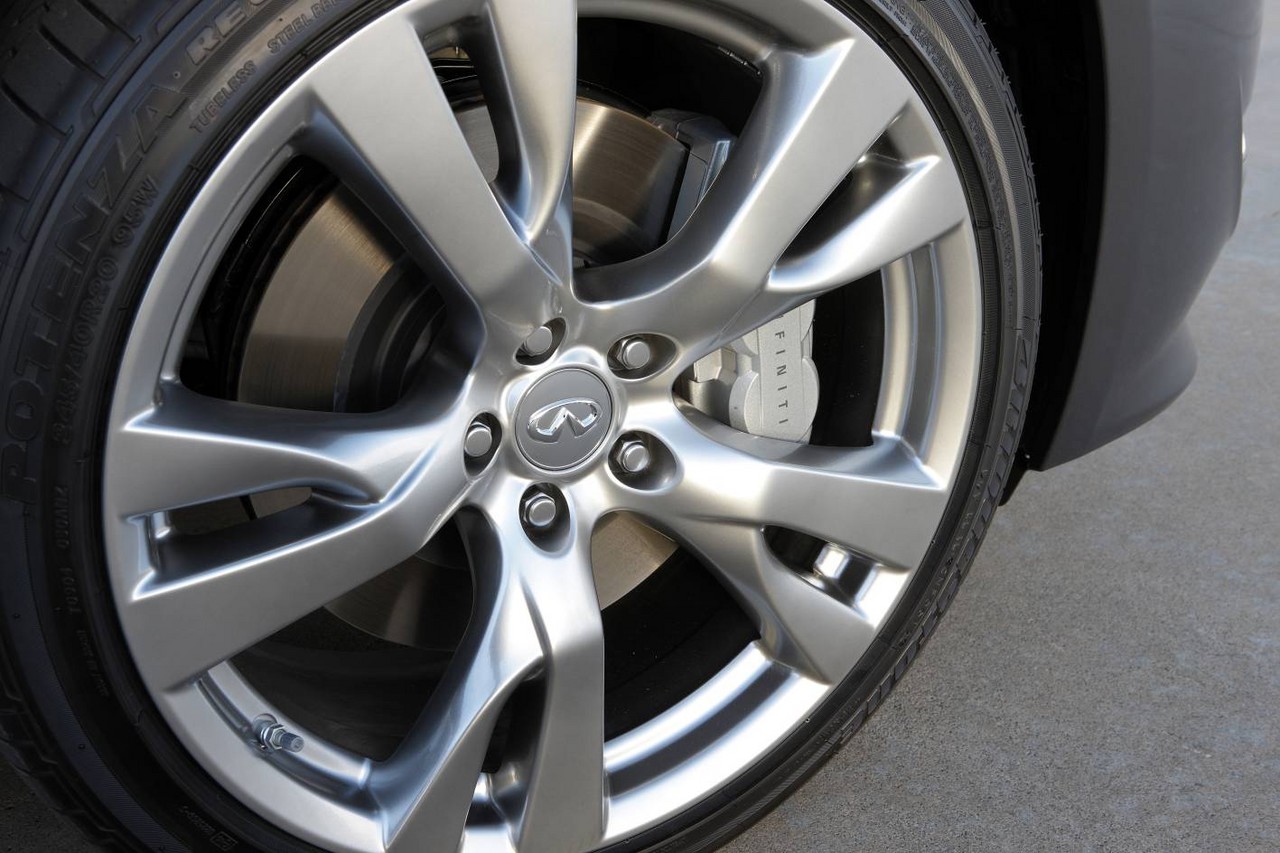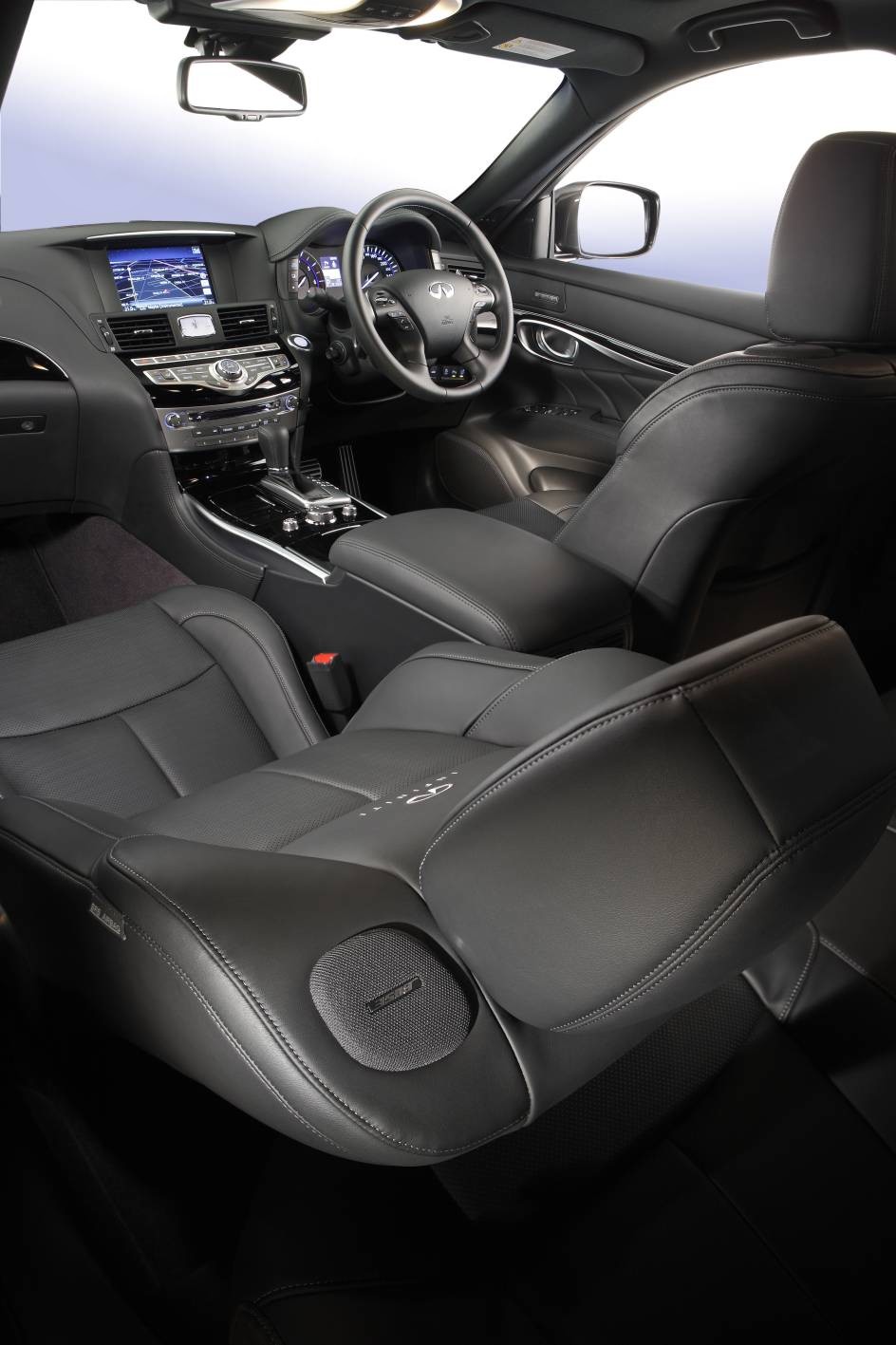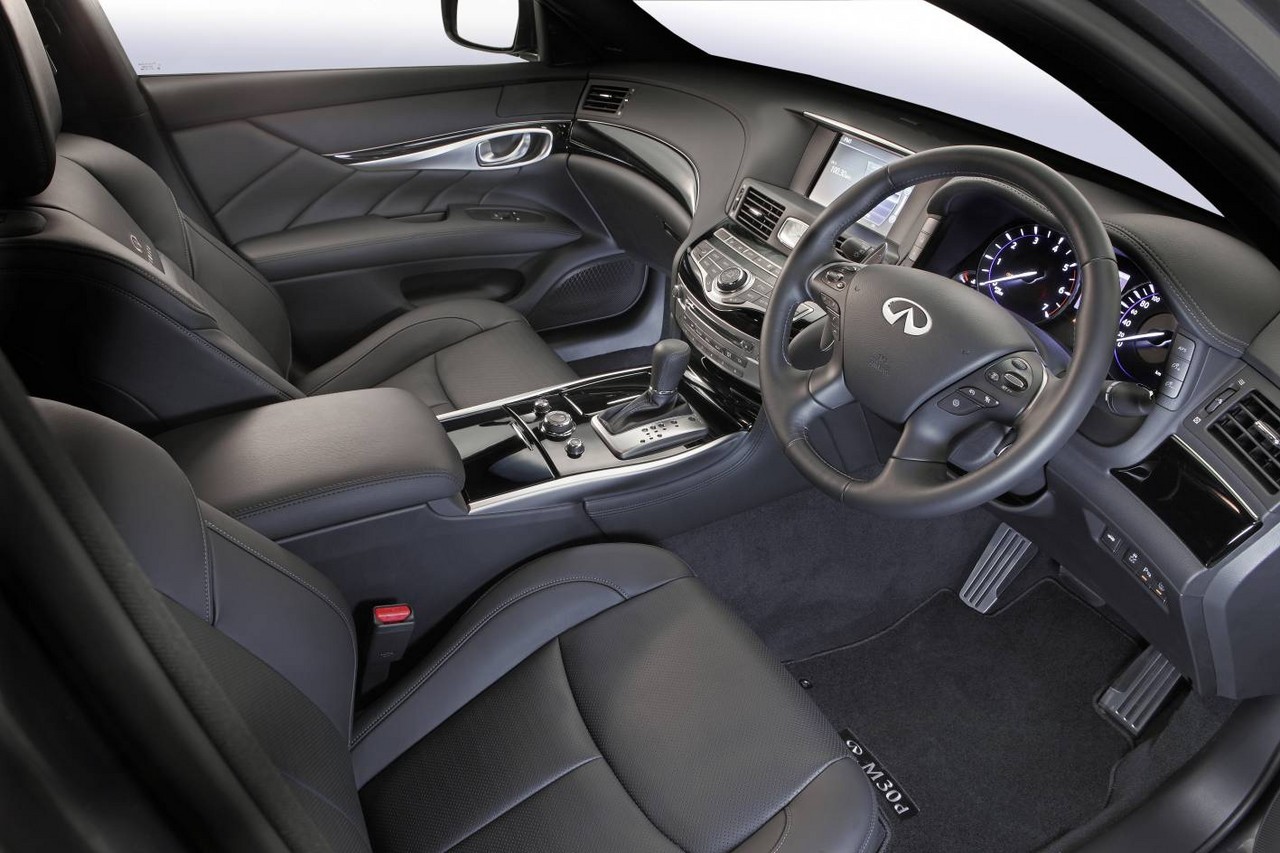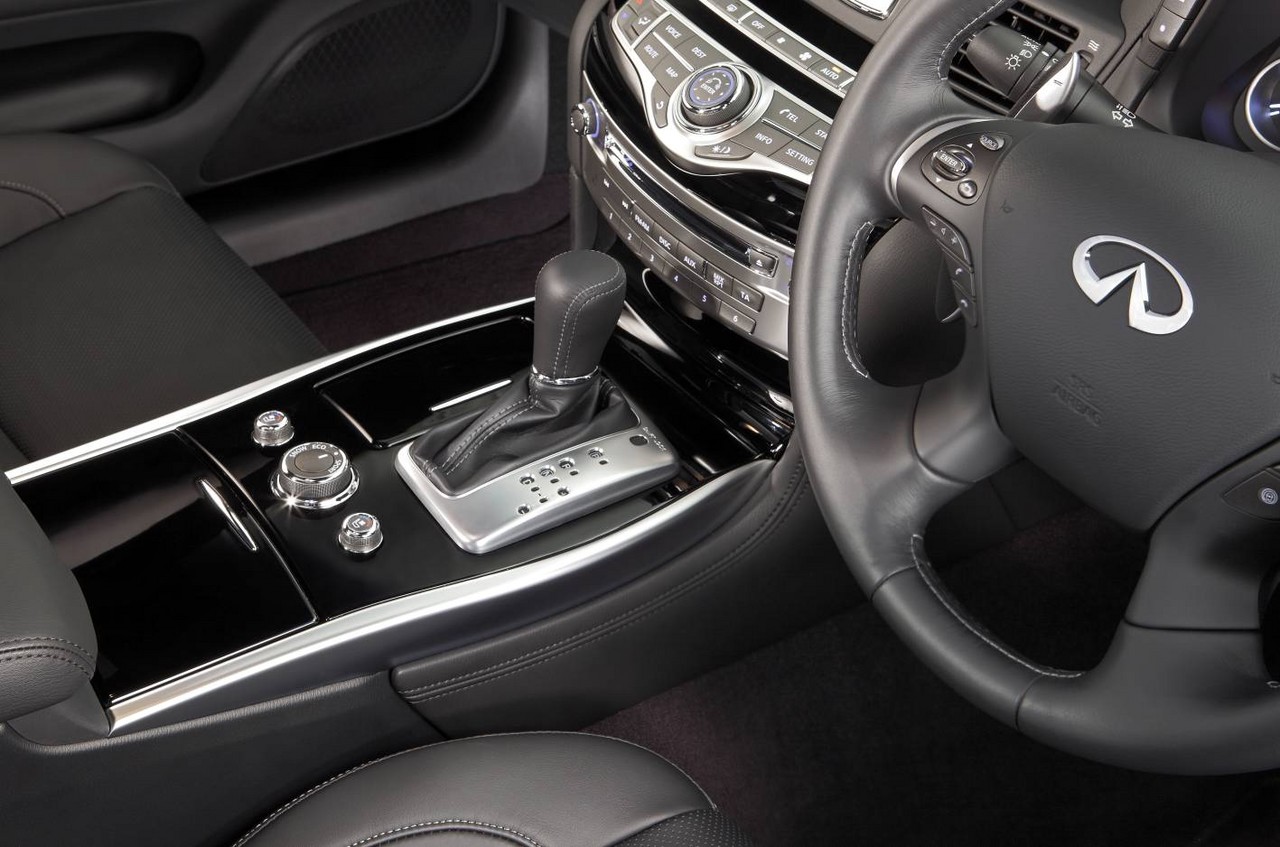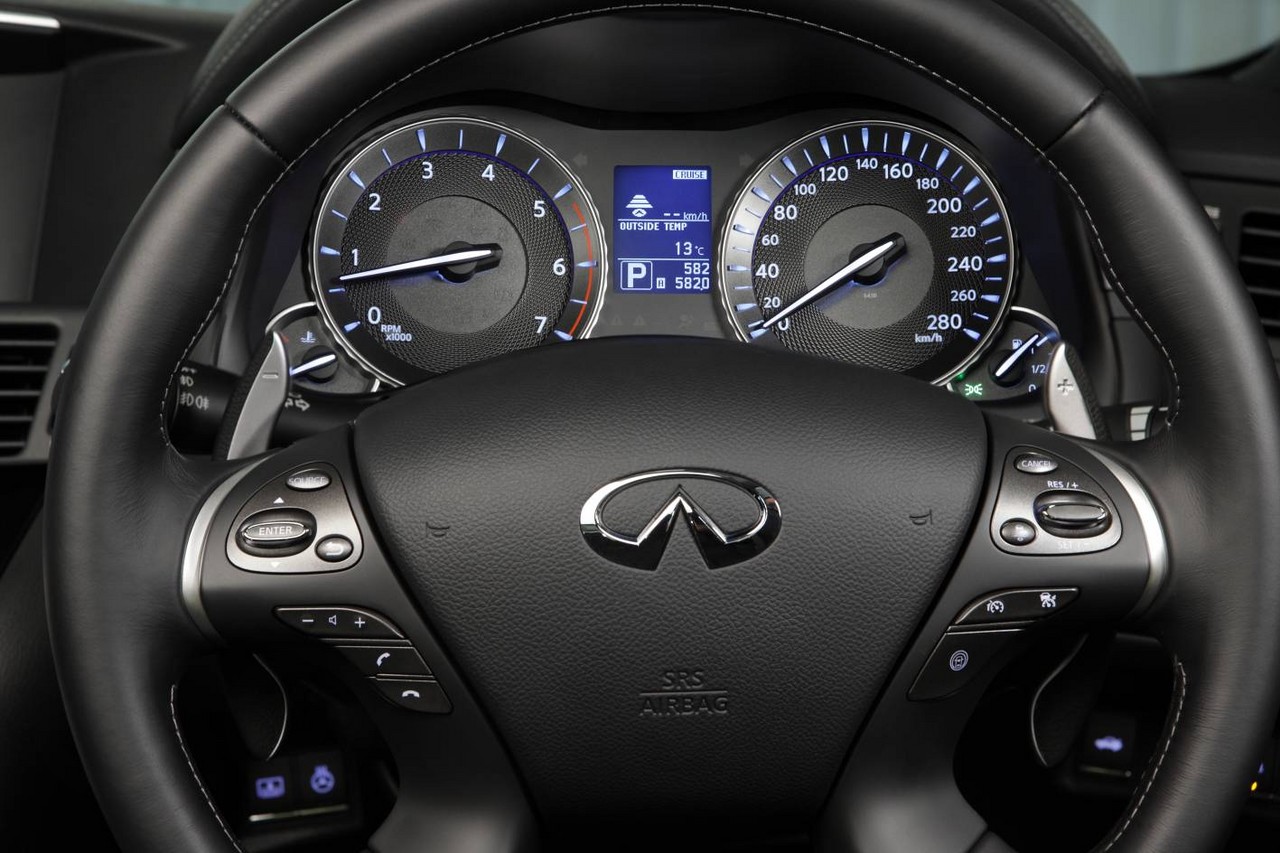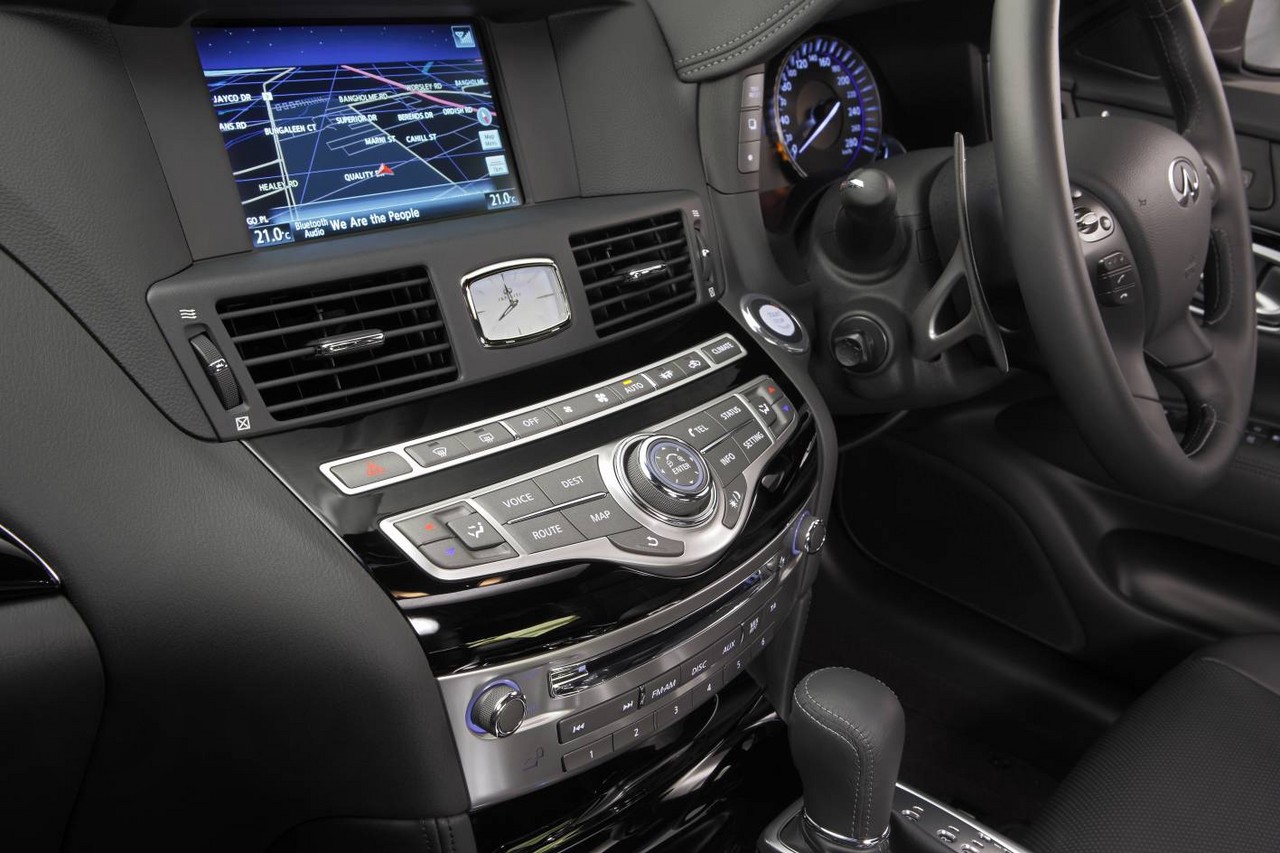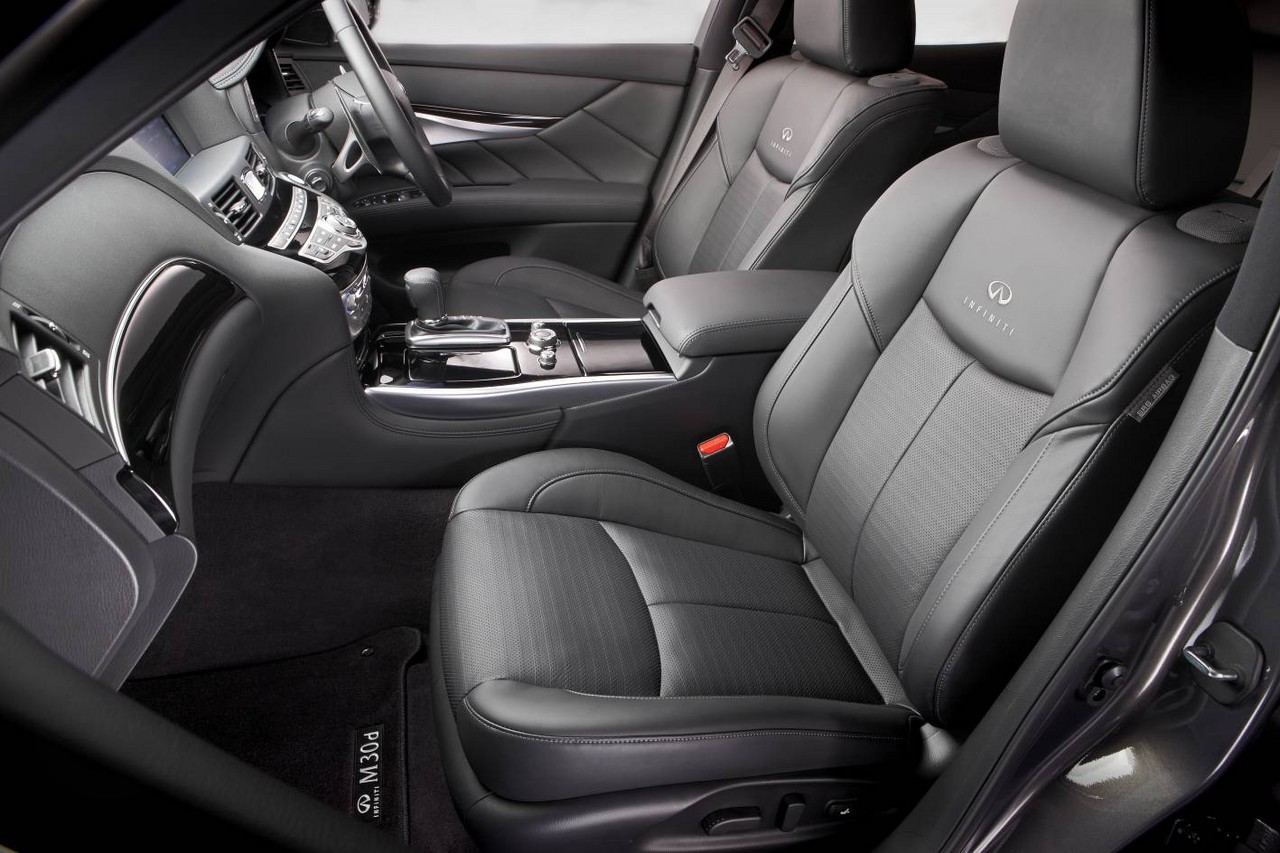
- Hybrid powertrain provides strong performance
- Responsive 3.7-litre V6 petrol engine
- Competent dynamics
- Odd steering weighting
- Firm ride
- Interior materials fall short of rivals
- Significant and ongoing depreciation
Overview
Released in August 2012, the Infiniti Y51 M was an executive sedan. Manufactured in Tochigi, Japan, the rear-wheel drive M was available with three drivetrains: a 3.7-litre V6 petrol engine (the M37 variant), a 3.0-litre turbo-diesel engine (M30d) or a hybrid drivetrain with a 3.5-litre V6 petrol engine and an electric motor (M35h). All models, however, were fitted with a seven-speed automatic transmission with adaptive gearshifting and downshift rev matching. Beyond the variants, the M sedan was available in GT, S Premium and GT Premium editions (the latter reserved for the M35h).
Based on Nissan’s FM-L platform, the M sedan was fitted with double-wishbone front suspension and independent, multi-link rear suspension. The M sedan was 4945 mm long, 1845 mm wide, 1509 mm tall and had a 2900 mm long wheelbase.
M35h
The M35h combined Nissan’s VQ35HR engine – operating on an Atkinson cycle – with a 50 kW electric motor which was installed in parallel between the engine and transmission. Electrical energy was stored in a 1.3 kWh lithium-ion battery pack – expected to have a service life of ten years – which was fitted behind the rear seats. The M35h was fitted with an ‘Electric Driven Intelligent Brake’ system which used the electric drive motor to operate the brake cylinders; as such, braking force was maintained while the hydraulic pressure of the friction brake was controlled to maximise energy regeneration. Other innovations for the M35h include an electro-hydraulic steering system with ‘on-demand’ assistance – which sought to provide the feel of a hydraulic system with the fuel efficiency of an electric system – and twin clutches which enabled the V6 engine to be decoupled when the car was in its electric drive and power regeneration modes. The M35h could accelerate from rest to 100 km/h in 5.5 seconds.
| Editions | Motor | Trans. | Peak power | Peak torque | |
|---|---|---|---|---|---|
| M37 | GT, S Premium |
3.7-litre petrol V6 | 7sp auto | 235 kW at 7000 rpm | 360 Nm at 5200 rpm |
| M30d | GT, S Premium |
3.0-litre turbo-diesel V6 | 7sp auto | 175 kW at 3750 rpm | 550 Nm at 1750 rpm |
| M35h | GT Premium | 3.5-litre petrol V6 | 7sp auto | 225 kW at 6800 rpm | 350 Nm at 4800 rpm |
| Electric motor | 50 kW at 1770-2000 rpm | 270 Nm at 1770 rpm | |||
| Combined | 268 kW | N/A | |||
Safety equipment
Standard safety equipment included dual front airbags, front side airbags, full-length curtain airbags, ABS, electronic brake force distribution, brake assist, electronic stability control, traction control, active front seat head restraints and front seatbelts with pretensioners and load limiters.
Both S Premium and GT Premium editions were also fitted with:
- Blind Spot Warning (BSW) and Blind Spot Intervention (BSI): provided visual and audible warnings if another vehicle was detected in the blind-spot area (BSW). If the driver ignored the warning and attempted to steer into the other vehicle’s path, the brakes would be automatically applied on the opposing side of the vehicle to returns the vehicle to its original lane (BSI);
- Intelligent Cruise Control (ICC): enabled the driver to specify the desired speed and distance to the vehicle ahead. If the vehicle ahead slows, ICC would automatically brake the vehicle to maintain the distance and resume the desired cruising speed as the vehicle ahead accelerated;
- Distance Control Assist (DCA): detected if the vehicle ahead was braking and provided feedback through the accelerator pedal to instruct the driver to remove their foot from the pedal;
- Forward Collision Warning (FCW) with Intelligent Brake Assist (IBA): laser sensors calculated the distance to the vehicle ahead and, if approaching too fast, would warn the driver. If the driver did not apply the brakes in time, IBA would automatically brake the vehicle;
- Lane Departure Warning (LDW) and Lane Departure Prevention (LDP): a camera mounted near the rear view mirror would detect lane markers and whether the vehicle was drifting into another lane without indicating. A warning tone would initially sound, followed by autonomous braking of the wheels on the opposing side of the vehicle if the vehicle continued to drift.
Furthermore, S Premium editions were fitted with a Low Speed Following (LSF) system which operated between 5 km/h and 40 km/h by autonomously accelerating and braking the vehicle in traffic. Unique within the range, the M35h was fitted with Infiniti’s Vehicle Sound for Pedestrians (VSP) system which used an in-car sound synthesizer with a speaker built into the front bumper. VSP would emit a range of high-low sounds at different volume levels according to vehicle speed to warn pedestrians of its approach.
Brakes
The GT editions were fitted with 320 mm diameter front and 308 mm rear ventilated disc brakes. The S Premium, however, was fitted with 355 mm ventilated front disc brakes with four-piston calipers and 350 mm rear ventilated discs with two-piston calipers.
Features
Standard features for the GT editions included 18-inch alloy wheels with 245/50 R18 W-rated tyres, a six speaker sound system with a CD/DVD player, MP3/WMA compatibility, 10GB hard-drive, auxiliary input (3.5 mm/USB/iPod) and Bluetooth audio streaming, satellite navigation with an eight-inch touch screen, dual-zone climate control air conditioning, cruise control, a ten-way power adjustable front seats, heated and ventilated front seats, semi-aniline leather seat upholstery, bi-xenon headlights with washers and adaptive lighting, front and rear fog lights, front and rear parking sensors, a reversing camera, automatic headlights, rain-sensing wipers, a leather-wrapped and heated steering wheel, Bluetooth mobile phone connectivity, push-button start, remote central locking, power windows and heated mirrors, power folding mirrors with automatic tilt when reversing, a power adjustable steering wheel (tilt and reach), driver memory settings (steering wheel, mirrors, seat position and climate control), sunroof, an electrochromatic rear view mirror, two 12 volt power outlets, tyre pressure monitoring, an alarm and immobiliser. All M sedans were fitted with a space-saving spare alloy wheel.
Compared to GT, the GT Premium added a sixteen speaker Bose Surround Sound system and a powered rear sunshade. The S Premium was further equipped with 20-inch light alloy wheels with 245/40 W-rated tyres, sport-tuned suspension, contoured front sports seats and a sports steering wheel and gearshift knob. The S Premium was also fitted with:
- Four-wheel active steering (4WAS) which would actively turn all four wheels while cornering and adjust the steering angle and ratio according to the vehicle’s speed; and,
- Dynamic Cornering Enhancement (DCE) which would adjust the torque distribution between the rear wheels and apply the brakes to individual wheels to reduce understeer.
Visually, the S Premium editions could be identified by their unique front bumpers, dark chrome grilles and blackened headlight surrounds and reflectors. Inside, there were aluminium pedals, black lacquer trim and a graphite roof liner.
Related links
